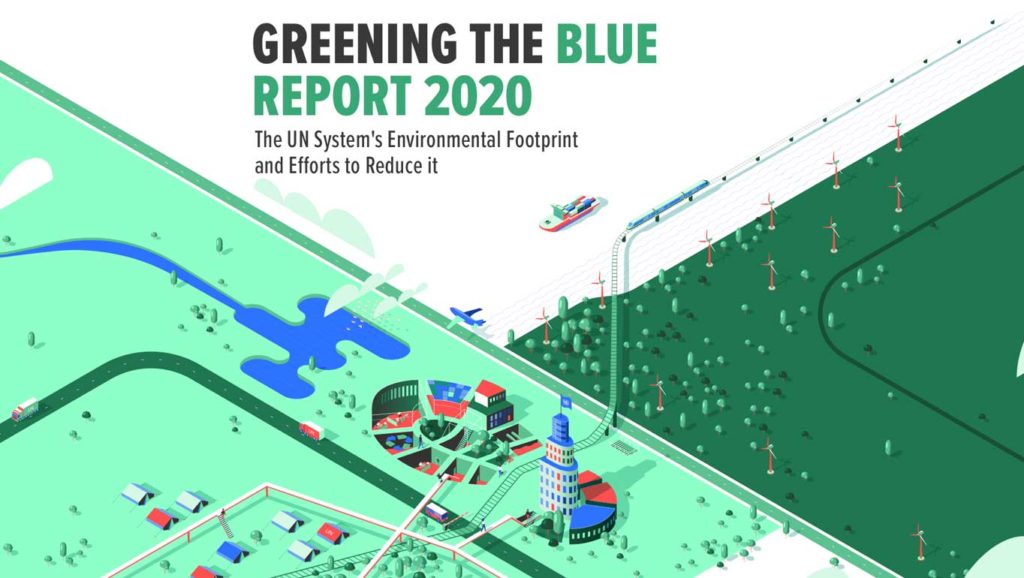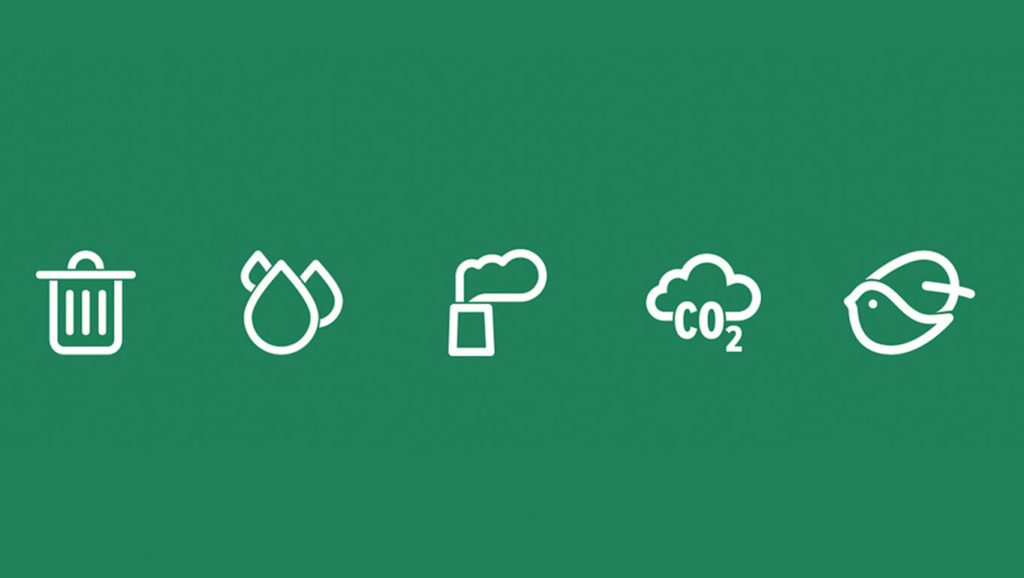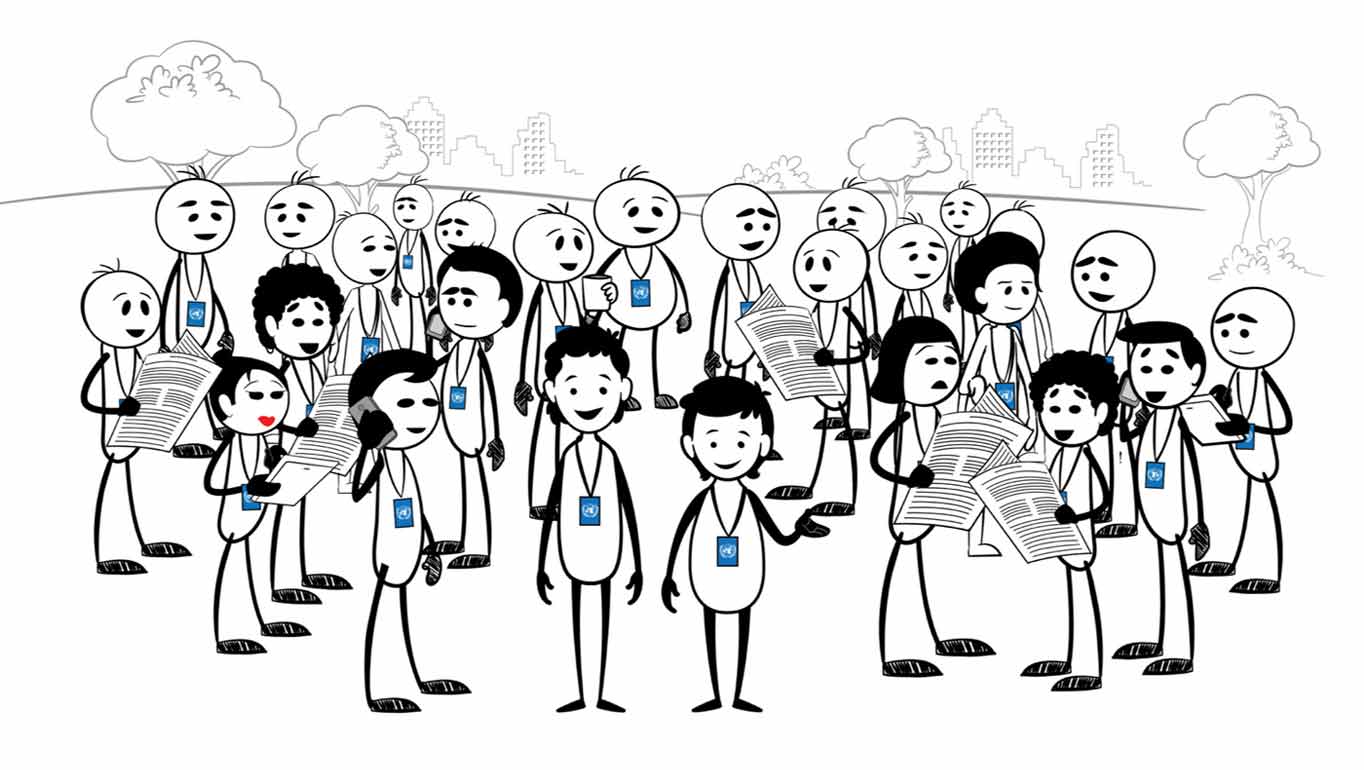With COP 26 taking place in Glasgow this November, it’s time to look at how the UN system contributes to the climate crisis.
With support from the Environment Management Group and UNEP, in 2007 the UN system Chief Executives Board (CEB) worked on the UN Climate Neutral Strategy. This demanded the UN system to measure and reduce its environmental impact, and to become climate neutral by offsetting any unavoidable emissions by 2020.
In 2019, Secretary-General Guterres asked for a review. As a result, the CEB endorsed the Strategy for Sustainability Management in the UN System 2020-2030 – Part 1: Environmental Sustainability in the Area of Management.
Behind the technical title, this strategy:
a. Aligns the UN system with the SDGs.
b. Commits it to align with IPCC report recommendations of limiting global warming
to 1.5 degrees.
c. Promotes transparency and increased efforts to understand and track the UN collective environmental footprint.
d. Identifies five key environmental areas of risk and six key management functions to be mobilised.
e. Demands the UN system to look beyond facilities and operations and define similarly ambitious objectives and targets for policies and programmes.
The strategy acknowledges that continuous environmental management efforts of operations will benefit the UN System in various ways, especially in the field:
1. Firstly, by ensuring the UN has a positive presence and legacy. One that does not compete with local communities for fuel, water, sanitation or other services but instead contributes to their development in a sustainable manner.
2. Secondly, by reducing the UN’s own vulnerability vis-à-vis resource shortages (such as fuel or water), thus, ensuring stronger business continuity and enhanced security, especially for staff operating in risk-prone areas.
3. Lastly, by guaranteeing the efforts undertaken are coherent and consistent over time and across various organisations.

Measuring results
These collective efforts are tracked and published yearly in the Greening the Blue Report: The UN system’s environmental footprint and efforts to reduce it.
It reports on key environmental aspects such as greenhouse gas emissions, waste and water management practices. It also looks at progression in environmental management, sustainable procurement and awareness-raising efforts made by entities. The report covers data from over 50 UN entities, their offices and operations worldwide, and around 300,000 UN personnel.
The report allows readers to see how UN system emissions from facilities and operations, including travel, changed over time depending on the effort of UN entities but also external factors such as surge in activities due to humanitarian crises or more recently the COVID 19 pandemic.
Hundreds of personnel, from headquarters to remote offices on the field, worked on the data collection in an effort to continuously improve the accuracy and the coverage of the environmental inventory. It is only through these combined efforts that this annual report continues to be successful and becomes more comprehensive each year.
The Greening the Blue Report is led by UNEP and supported, respectively, by ICAO and UNFCCC with their air travel calculator and advice on climate neutrality. The methodologies for data collection and tracking are agreed by a network of over 50 sustainability focal points in the UN system. In 2020 an additional international organisation joined our community: the Green Climate Fund. The report can be seen on greeningtheblue.org
Taking action
Over time, the efforts made by UN personnel across the system to walk the talk have been impressive.
The Greening the Blue website showcases the most recent and interesting stories of action taken by the UN worldwide, highlighting concrete results and innovation.
It also shows tools and methodologies that are commonly applied in the UN system to reduce our environmental footprint. Each entity has a devoted sustainability focal point accessible via the entity specific webpages.

Mobilising personnel
We need every member of UN personnel to make their contribution in order to meet the United Nations’ environmental commitments. Therefore, as part of the strategy, UN entities committed to training their personnel on what environmental sustainability means, why it’s important, and the role each person can play in reducing the UN’s carbon footprint.
The Greening the Blue Tutorial is designed for UN personnel, highlighting the work that’s underway across to improve its environmental performance. It provides helpful advice on how each individual can contribute to that effort.
The course is delivered as a one-hour animation, in which we follow two characters – Stick and Bean – on a typical workday of a UN personnel member. The animation is presented in 10 separate modules, each representing a different activity. These include booking travel, taking a lunch break, travelling on ground transport, and arranging meetings.
Each individual is asked to provide general information about their location and behaviour at work. Users are then given an overview of their work-related carbon footprint, and how it compares to both the UN personnel average and the global individual average. The footprint is calculated based on the real and updated data provided by entities through the annual environmental inventory.
The course also provides valuable advice to anyone outside the UN system wanting to learn how to reduce their workplace carbon emissions. It is accessible via greeningtheblue.org
Conclusion Many colleagues across the world have started to change their behaviour and work in ways that, together, will make a difference. Please join our effort to green the Blue!



